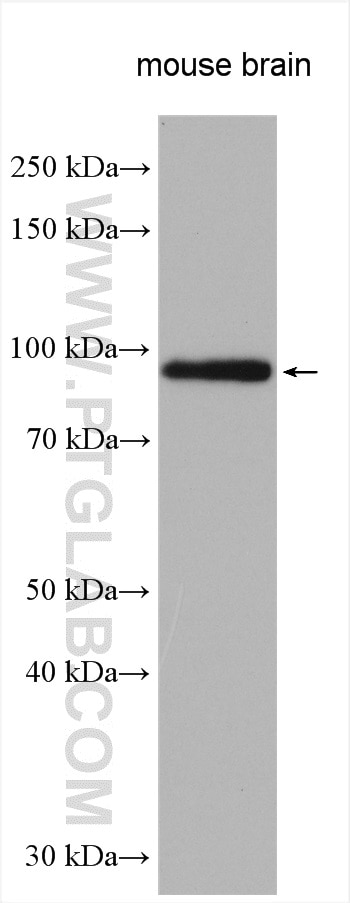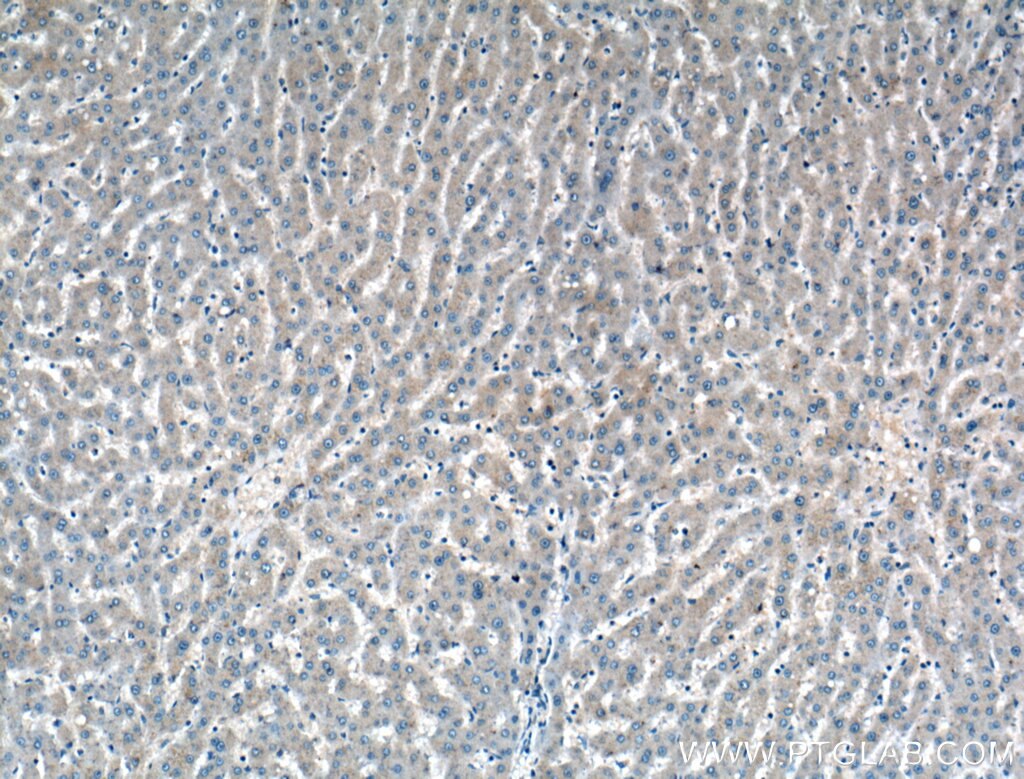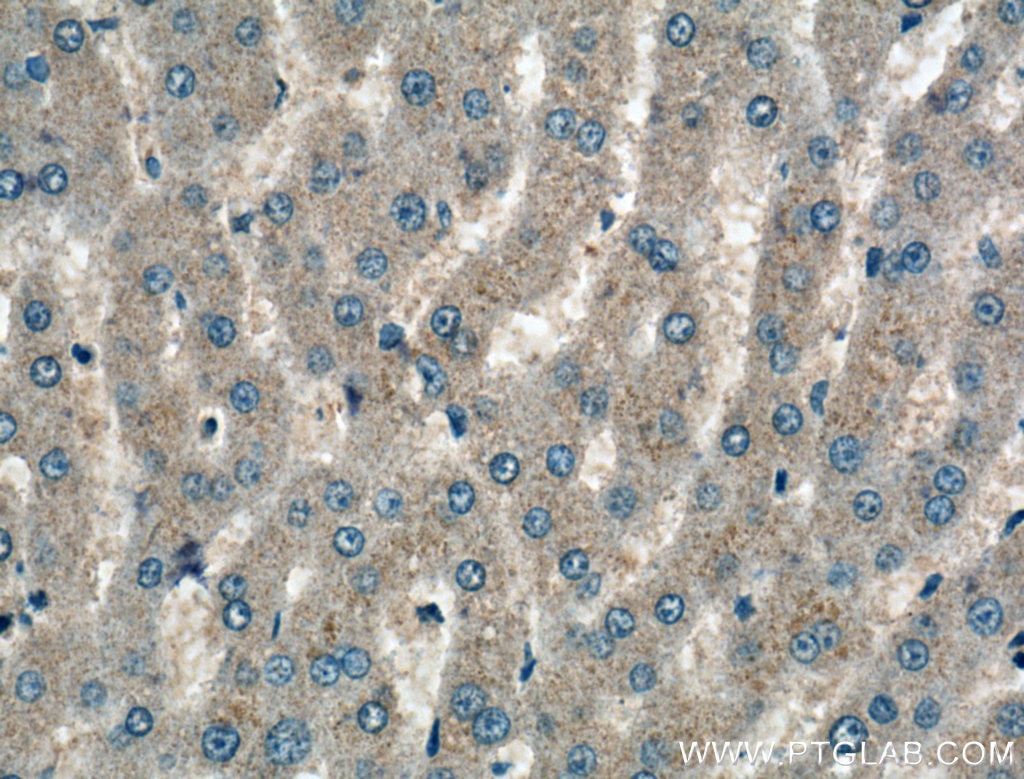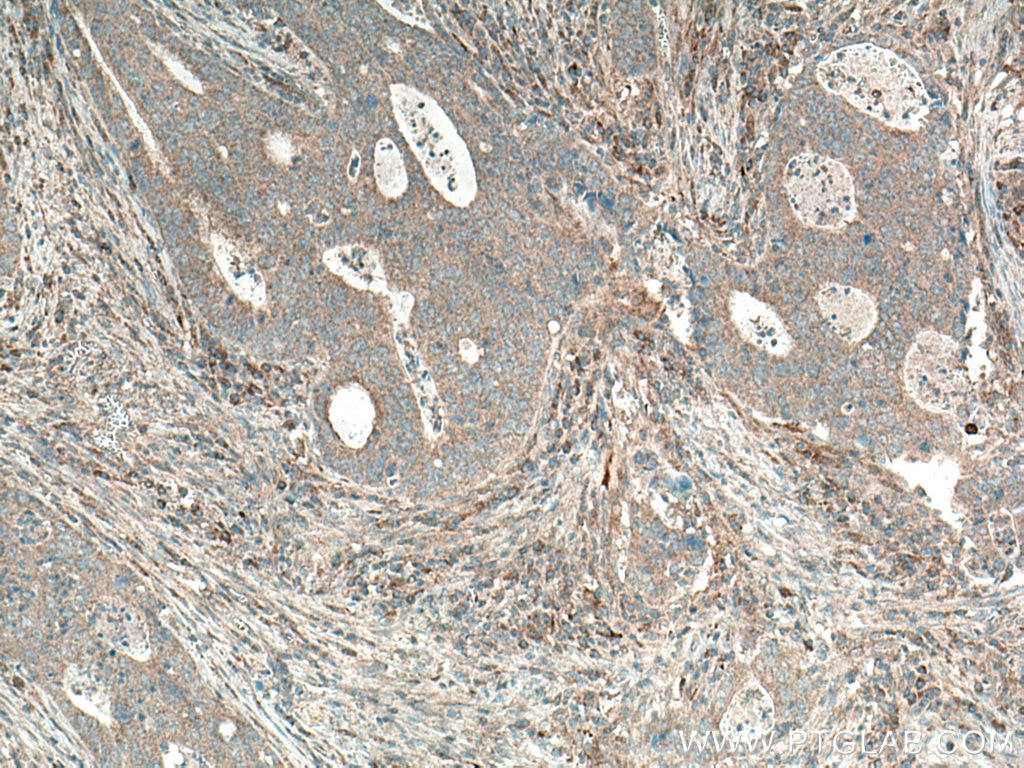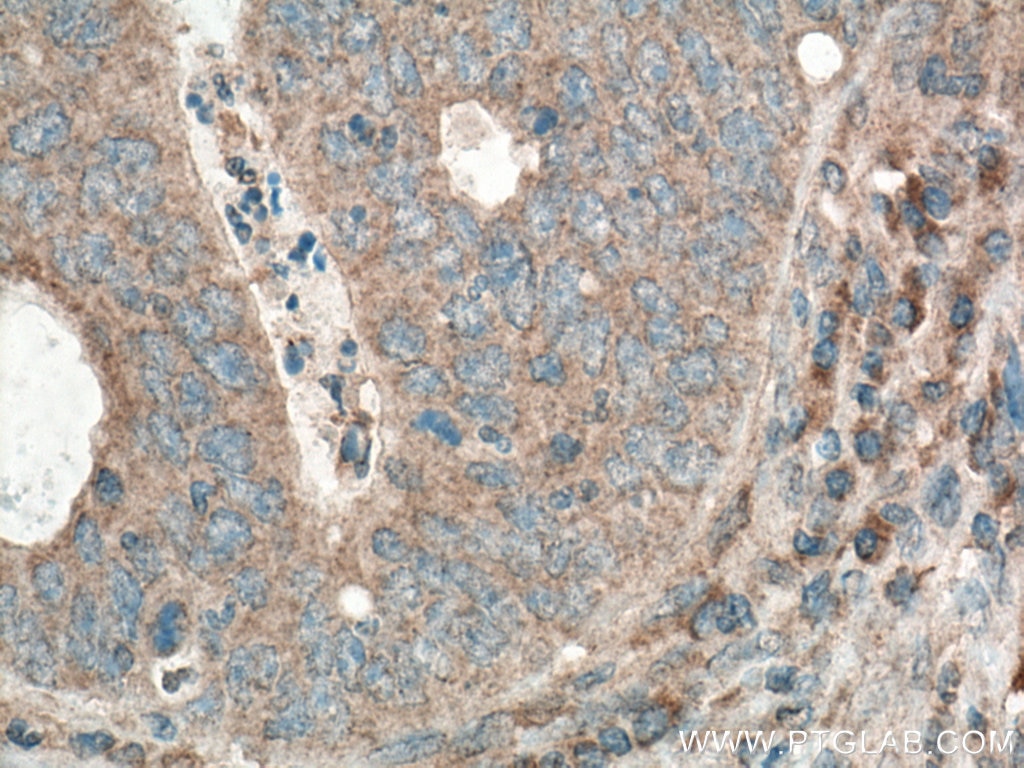ADAMTS4 Polyklonaler Antikörper
ADAMTS4 Polyklonal Antikörper für WB, IHC, ELISA
Wirt / Isotyp
Kaninchen / IgG
Getestete Reaktivität
human, Maus und mehr (2)
Anwendung
WB, IHC, IF, ELISA
Konjugation
Unkonjugiert
Kat-Nr. : 11865-1-AP
Synonyme
Geprüfte Anwendungen
| Erfolgreiche Detektion in WB | Maushirngewebe |
| Erfolgreiche Detektion in IHC | humanes Lebergewebe, humanes Kolonkarzinomgewebe Hinweis: Antigendemaskierung mit TE-Puffer pH 9,0 empfohlen. (*) Wahlweise kann die Antigendemaskierung auch mit Citratpuffer pH 6,0 erfolgen. |
Empfohlene Verdünnung
| Anwendung | Verdünnung |
|---|---|
| Western Blot (WB) | WB : 1:300-1:600 |
| Immunhistochemie (IHC) | IHC : 1:50-1:500 |
| It is recommended that this reagent should be titrated in each testing system to obtain optimal results. | |
| Sample-dependent, check data in validation data gallery | |
Veröffentlichte Anwendungen
| WB | See 25 publications below |
| IHC | See 4 publications below |
| IF | See 1 publications below |
Produktinformation
11865-1-AP bindet in WB, IHC, IF, ELISA ADAMTS4 und zeigt Reaktivität mit human, Maus
| Getestete Reaktivität | human, Maus |
| In Publikationen genannte Reaktivität | human, Hausschwein, Maus, Ratte |
| Wirt / Isotyp | Kaninchen / IgG |
| Klonalität | Polyklonal |
| Typ | Antikörper |
| Immunogen | ADAMTS4 fusion protein Ag2443 |
| Vollständiger Name | ADAM metallopeptidase with thrombospondin type 1 motif, 4 |
| Berechnetes Molekulargewicht | 837 aa, 90 kDa |
| Beobachtetes Molekulargewicht | 90 kDa |
| GenBank-Zugangsnummer | BC030812 |
| Gene symbol | ADAMTS4 |
| Gene ID (NCBI) | 9507 |
| Konjugation | Unkonjugiert |
| Form | Liquid |
| Reinigungsmethode | Antigen-Affinitätsreinigung |
| Lagerungspuffer | PBS with 0.02% sodium azide and 50% glycerol |
| Lagerungsbedingungen | Bei -20°C lagern. Nach dem Versand ein Jahr lang stabil Aliquotieren ist bei -20oC Lagerung nicht notwendig. 20ul Größen enthalten 0,1% BSA. |
Hintergrundinformationen
The ADAMTS (a disintegrin-like and metalloproteinase with thrombospondin motifs) is a family of extracellular metalloproteinases mediating diverse functions including matrix degradation, blood coagulation and angiogenesis. The ADAMTS family constitutes a group of proteins composed of 19 enzymes and 7 ADAMTS-like proteins. ADAMTS4 is a well-known proteoglycanase and has angiomodulatory properties. The 837 amino acid long human ADAMTS4 protein contains a long signal peptide, a prodomain, a metalloproteinase catalytic domain with zinc-binding motif, a disintegrin-like domain, a central TSR motif, followed by a cysteine-rich region with ten conserved cysteine residues, and a spacer domain. The full-length proform human ADAMTS4 (zymogen form) has been described to be 90 kDa. In extracellular matrix (ECM), ADAMTS4 undergoes further C-terminal cleavage at Lys694-Phe695 and Thr581-Phe582, respectively, to generate two other truncated forms-53 and 40 kDa (PMID:12202483).
Protokolle
| PRODUKTSPEZIFISCHE PROTOKOLLE | |
|---|---|
| WB protocol for ADAMTS4 antibody 11865-1-AP | Protokoll herunterladen |
| IHC protocol for ADAMTS4 antibody 11865-1-AP | Protokoll herunterladenl |
| STANDARD-PROTOKOLLE | |
|---|---|
| Klicken Sie hier, um unsere Standardprotokolle anzuzeigen |
Publikationen
| Species | Application | Title |
|---|---|---|
Adv Sci (Weinh) Mechanical Load-Induced Upregulation of Talin2 through Non-Canonical Deubiquitination of OTUB1 Drives Facet Joint Osteoarthritis Pathogenesis | ||
Adv Sci (Weinh) Inhibition of Heat Shock Protein 90β by Catalpol: A Potential Therapeutic Approach for Alleviating Inflammation-Induced Cartilage Injuries in Osteoarthritis | ||
Acta Biomater ROS-responsive magnesium-containing microspheres for antioxidative treatment of intervertebral disc degeneration | ||
Bone Joint Res Suramin attenuates intervertebral disc degeneration by inhibiting NF-κB signalling pathway. | ||
Mol Med Rep Acetyl zingerone ameliorates osteoarthritis by inhibiting chondrocyte programmed cell death | ||
Inflammation Simvastatin Inhibits IL-1β-Induced Apoptosis and Extracellular Matrix Degradation by Suppressing the NF-kB and MAPK Pathways in Nucleus Pulposus Cells. |
